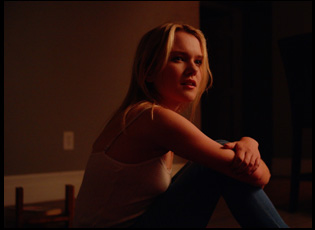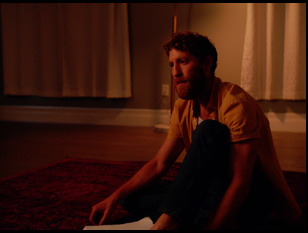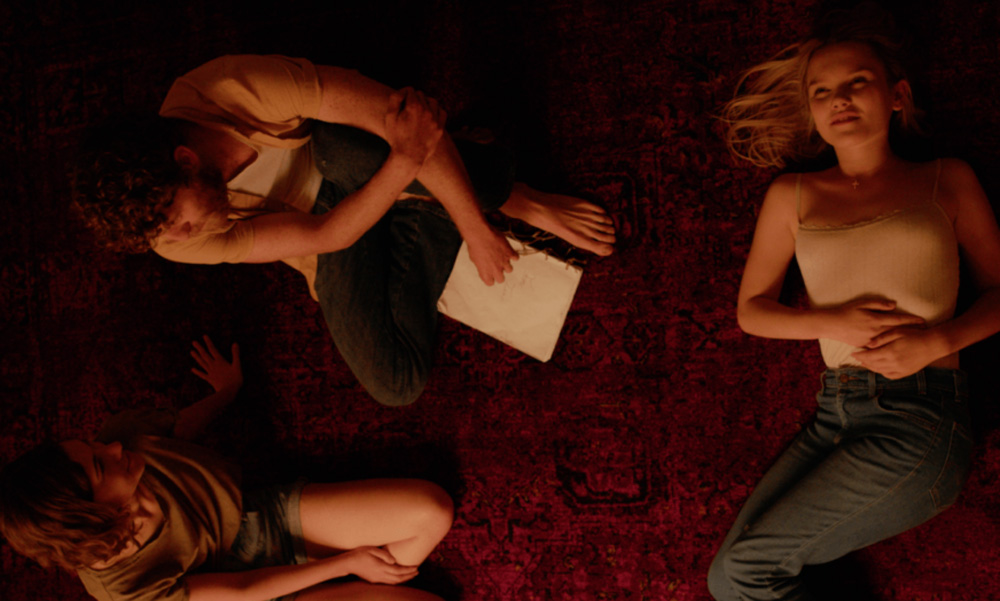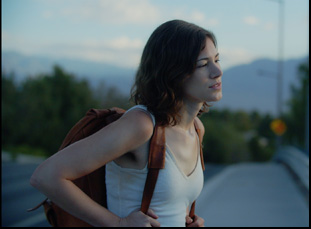When considering making a character’s passion for Friedrich Nietzsche a key plot point in his latest film “Goldilocks and the Two Bears,” Jeff Lipsky hardly say it as a liability that he hadn’t read a word of the German philosopher before writing the script. He saw it as an opportunity.
“Neither Brian Mittelstadt, who plays Ian, nor I, who wrote every word in the script, knew anything about Nietzsche or Voltaire, but for me, it’s a blessing because even at my advanced stage, I get to learn about subjects I knew nothing about,” says Lipsky, who has had multiple filmmaking lives, parlaying success in helping found such distributors as Lot 47 Films, Focus Features and Adopt Films into making fiercely independent dramas of his own as a writer/director. “In [my film “Molly’s Theory of Relativity”] it was about astrophysics. Science was my worst subject in school. And yet I began being a regular at the Hayden Planetarium in New York and had a technical advisor, a late twenties female astrophysicist and one of the nicest people I’ve ever met, who became a very good friend, so one of the joys of creating careers for my characters is that I get to do research in fields I either never had interest in before or never had the time to really learn about.”
Lipsky has always been interested in gaining wisdom as much as passing it on, and he went against conventional thinking when he set about making his eighth feature in his new hometown of Las Vegas, resettling from New York in 2018 with the hope of making films in the same scrappy way he had in the heart of the independent film scene. Fittingly, he found the temperature just right in the desert to make “Goldilocks,” the tale of three lost souls who find themselves in an empty condominium that’s been passed down to Ivy (Claire Milligan) by her grandmother who recently passed, leaving her adrift even with the knowledge that she has a place to stay. She ends up extending the same courtesy to Ian (Bryan Mittelstadt) and Ingrid (Serra Naiman) after unexpectedly finding them in her home after she’s been away, probably a little less skeptical of the hitchhiking pair than she should be, but welcome to the company when she’s been alone in her grief with plenty of room to spare.
As in nearly all of Lipsky’s films such as “Flannel Pajamas” and “Twelve Thirty,” the condo in “Goldilocks and the Two Bears” becomes a hothouse of pent-up desires – clothes are shed by Ian and Ingrid immediately upon reaching the condo, first when they haven’t showered in ages, but then for other reasons as thorny sexual dynamics start to spring up between them as both Ian and Ingrid have unshakeable inhibitions for all their bravado that the former at least tries to paper over by quoting his favorite philosophers and unfortunately they look to serve as the guide to the more innocent Ivy to follow. It becomes evident pretty quickly that there are greater concerns than the scorpions that Ingrid warns Ivy away from as she takes her outdoors, and the film employs a city known for gambling to wring tension from watching those who sometimes can’t help themselves from making bad bets. That said, Lipsky’s own wager on making it work in Vegas pays off handsomely and with the film following up a premiere last week in town with a cross-country theatrical run starting this week in New York and heading west, he spoke about filming in Sin City, embracing the unknown and why he always has a very specific audience of two in mind.
I moved here [to Las Vegas] in 2018, and then in 2019, I was largely on the road opening my previous movie called “The Last,” so I wasn’t in Las Vegas for very long. Then 2020 came and the world ended and I became somewhat of a hermit for the next two years. I live in a condo community with about 250 units and you can hear a pin drop around here. It’s not the Las Vegas that tourists see. I began wondering who all these people are and what were the circumstances by which they moved here from Maine, Washington state, or New York like I did [figuring] the circumstances have got to be interesting.
Then I always aspire to conjure up characters who may do bizarre things professionally. I made one movie about a woman who was an astrophysicist and I don’t know anything about astrophysics. But there are always aspects of those characters that if I do my job well, anybody, male, female, can identify with facets of those characters and if you do that, half of your job as a writer/director is done. The other half is casting the right people to play those parts. So a little of it was observational and then my imagination and I decided it was going to be a story about two women and one man, all of whom began their lives in New York and by dint of completely, almost completely different circumstances, wind up in Las Vegas and what begins as something that could be very scary and threatening to one another… well, it becomes that, but then how they interact with each other in the first half of the film completely changes in the second half of the film, and to me, that’s what makes the film interesting. I wanted to tell a story about the Las Vegas that as a permanent resident here that I was experiencing for the first time.
And I have been boasting that this is the first narrative theatrical feature film that has ever in history been entirely filmed — interior, exteriors — in Las Vegas. The only way you can do that is not to make it about the Strip or about the tourists who come here, and not to make it about alcoholics who come here like Nicolas Cage and decide to commit suicide on the strip. You need to really explore what is a really interesting state and locale.
You see that as soon as you leave the condos and start getting out into the city. What was it like to use as a location?
It’s almost like shooting in New York. You run, you find great locations, and then you have to figure out a way of getting permission. I work on a very small scale and I think my films look like a significantly bigger budget than they actually are. I’ve learned how to do that without sacrificing quality or performance after eight films, and [Las Vegas] is much like New York in that you find a dream location and you can’t find the owner of the location to ask for permission, so you decide whether you’re going to steal the shot. You get permission from some people and you don’t get permission from others. In the only day that we shot on the Strip, there’s a sequence that had to take place at a grand eloquent Las Vegas strip location and I had written it in the script to be the LINQ High Roller, this massive Ferris wheel, but I had never taken a ride on it and when my cinematographer and I went on it, we realized immediately there was no way we could shoot on this thing, let alone get permission from Caesar’s Palace that owns it.
So I said, “Well, there’s one other high structure on the Strip,” and it happened to be the Stat, which is the fifth highest man-made structure in the United States and we contacted them with a blind phone call. Within a week, they had given us permission to film on their 108th floor observation deck. A few days later, our contacts there called and said, “We didn’t ask you, but do you also want to shoot in the casino?” And I said, “Yeah, I would love to shoot in the casino,” and the day before we filmed there, my assistant directors were saying, “We have four actors and we need to do hair, costumes, makeup — where are we going to do that? We can’t do it in the ladies’ room.” And I said, “I can’t call these people, They’ve been unbelievably generous to us,” but minutes later, unprompted by me, I got an e-mail from an executive at the resort who said, “I’m going to be your point person tomorrow. Is there anything else you need?” And so I said, “Well, we could use a room for makeup and hair?” And he said, “Does it have to be a hotel room?” Long story short, we had the world’s biggest dressing room I’d ever seen with a private bathroom. And all I’m saying is that there were situations like that and nine times out of 10, we found very cooperative people. Sometimes we had to work with people who were trying to extort money, but that happens everywhere.

It is a financial consideration because if we’re filming wherever I’m living at the time, the location fee is zero, but when you mention “Flannel Pajamas” and especially “Molly’s Theory of Relativity,” that was about a female astrophysicist that I came up with one day [because] I’m living on a high floor of a building with a limitless view of the Manhattan skyline, and I’m saying to myself, “Who would ever voluntarily want to move out of a place like this?” Wouldn’t everybody in Europe or Asia, who had any aspirations to travel and see the world, want to see what I get to look out on every day?” But apart from the skyline, I started looking higher. It was a clear night. And even in New York, I could see stars in the sky. And so I said, you know what? There’s a story here.
I came up with a story that takes place over an 18-hour period that was 99% shot in that one-bedroom apartment and I told my cinematographer Jendra Jarnagin, a brilliant DP, when she came on board that your challenge is going to be that every scene in the movie, I want to see something we haven’t seen before, even though the whole movie takes place in a one-bedroom apartment. She did a slam-bang job doing that. There’s one bathroom in the apartment, and it’s a small bathroom. We shot four different scenes in that bathroom and not one of them looks like any of the other ones. So the locations and my home do inspire the stories more than any kind of financial consideration.
What was it like to work with a local crew?
The disappointment for me was that when I decided I was going to make this movie, I quickly found out there were no actors in Las Vegas. None. Zero. Zip. They don’t exist because UNLV has a vast cinema program and a lot of it is focused on acting, but if there are talented graduates coming out of there, as soon as they grab their diploma, they jump in their car and drive four hours to Los Angeles and try to make a career there. So we had to cast a wide net across the whole country to find the leads and the secondary leads for the film. The three leads here are from California and when it came to the crew, we did import three people whom I worked with. I’m a loyalist. I’d worked with them before and trust them with my cinematic life. But the rest of the crew were all locals and they achieved unbelievable things and because they were the locals, they work on commercials and low-end horror films and documentaries all the time, so they know where the bodies are buried, dramatically speaking, and they were an enormous assist. It began with the graduates of UNLV’s cinema department, and continued [to post-production] — there’s more original music in this movie than any of my other movies. And a lot of that came from the Las Vegas Academy of the Arts, which is the Nevada equivalent of New York’s High School of Performing Arts that was portrayed in the movie “Fame.”

It is, for me, the most nerve-wracking part of it because when the editing was done, I was 1000% happy and satisfied with what we had created. It is the most collaborative art form ever created. Unfortunately, it’s the most expensive art form ever created, and I will never take for granted the opportunity I’ve had to direct eight feature films and be proud of all of them. It doesn’t happen to too many people that they can do that and say that. Now, the film goes out to critics and audiences, and I have 100% faith in the movie. When “Flannel Pajamas” was at the Sundance Film Festival, I had told the audience that I financed 100% of my first movie and this was my second movie. And I lost all the money [on my first movie], so somebody said, “Well you said you lost all the money in your first movie. When you were doing ‘Flannel Pajamas’ did you think of wearing your marketing and distributor hat? You’ve been very successful out all these years.” I said, “No, at the end of the day, I would love millions of people to see any movie I make, but the bottom line is, I make movies for two people, me and a young woman in Germany.” And they said, “What?” And I said, “I’ll explain.”
When I made my first movie, I realized at a certain point it wasn’t going to make its money back, and it had been in some high-end film festivals. I got a call late in the game from the Hamburg Film Festival, and I had never heard of the Hamburg Film Festival, but they said, “We saw your movie, we liked it. We’ll fly you over. You don’t have to dub it into German or subtitle it because everybody here speaks English and we’ll assign a translator to you while you’re in town.” So I said, “Well, the Beatles did well in Hamburg. I’ll go to Hamburg.” And I did and they assigned a translator who was more of a tour guide because everybody did speak English. The festival was in a mall movie theater and the audience was about half to two-thirds full, and it was a very young audience.
My first movie was about young people. I was introduced in German and I introduced the film in English. Then I watched the reactions for half the movie and they were good. It was about the same as American audiences were reacting. Then the movie ended and I did a quick Q&A. They had to empty the theater for the next movie. And I went to talk with the director of the festival, and while we were talking, a young, shy German woman approached us and she said, “Excuse me, I just wanted to tell you that yesterday in the film festival, I saw the [then-new] David Cronenberg movie ‘Crash,’ and it made me so angry, I never wanted to see movies again. And now that I’ve seen your movie, I want to see movies again.” And if she had been the only human being on the face of the planet Earth who had seen my movie, it would have been worth every dime I spent on it because how many people through artistic expression can affect the life of a total stranger halfway around the world? That’s why I make movies for me, and that’s why I make movies for young women.
“Goldilocks and the Two Bears” opens on July 5th in New York at the Quad Cinema, July 19th in Los Angeles at the Laemmle Royal and the Encino Town Center 5 and July 26th in Long Island at the Cinema Arts Centre.





